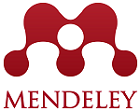AUTHOR GUIDELINE
Publication Title in English Limited to 10 Words
First Author 1,a,*; Second Author 2,a; ....... ; Last Author x,n (Times New Roman Bold 12pt)
1 First Author Affiliation, Address, City and Postal Code, Country (Times New Roman 9pt Italic)
x Last Author Affiliation, Address, City and Postal Code, Country
a First Author Email; b Second Author Email; ..... ;n Last Author Email
* Corresponding author
Abstract
The abstract, written in English and limited to a maximum of 200 words, should be formatted in italics with Times New Roman font, size 11. It needs to be concise, informative, and offer a brief summary of the problem investigated, the approach taken to address it, and the outcomes. Ideally, the abstract should conclude with a brief statement on the significance of the findings or conclusions. While numbers are permitted, symbols should be avoided in the English abstract.
Keywords—min 3 and max 5 keywords, A keywords, B keywords, C keywords
- Introduction
This document serves as a template for the Word (doc) version. It can be used as a reference when writing your manuscript. The complete paper should include the following sections: 1. Introduction, 2. Methods, 3. Results and Discussion, 4. Conclusions, and 5. Acknowledgements and References. Each section's content is detailed within the document.
Submissions must be complete, final versions and must not have been previously published in other journals. Manuscripts should be no longer than 12 pages (including tables, figures, appendices, and references), written in English, using Times New Roman font, size 11 pt, single-spaced on A4 paper. The entire manuscript (including figures, tables, and appendices) should be printable in black and white.
Articles published in this journal include research findings, conceptual ideas, theoretical studies, and applications. The journal is published quarterly in January, April, July, and October. References should follow the American Psychological Association (APA) 7th Edition format. Examples are as follows:
MariaDB is an enhanced version of MySQL, with new functionalities added; however, command lines, documentation, and more still bear the name mysql (Forta, 2011).
Research by Aditya and Juhana (2015) utilized MariaDB as an open-source MySQL-based database server, implementing database server clustering using Galera Cluster, which is a multi-master cluster implementation for MySQL and MariaDB, optimized through the Weighted Round Robin algorithm.
According to Dawodi et al. (2019), a very popular open-source RDBMS application is MySQL, used by hosting service providers such as Rackspace, GoDaddy, Bluehost, WHM, and others.
- Method
The Methods section encompasses problem analysis and the architectural or design methods employed to address the problems. Problem analysis involves identifying the issues that exist and explaining how they are resolved in this study. The design aspect demonstrates the solution to the problem, which should be illustrated with diagrams and accompanied by thorough explanations. For instance, this could include data processing diagrams that show the flow from raw data to the final product, or hardware design diagrams.
- Review Process
Please submit your manuscript following the Templates and Author Guidelines, which can be downloaded and reviewed on the journal's website. Submissions should be made electronically. The initial document format must be in a one-column Word.doc format, including all images and tables.
- Equations
Formulas referenced in the text should be presented in display style and sequentially numbered from the beginning to the end of the paper, as illustrated in the following example:

Formulas that are not referenced do not need to be numbered.
- Figures And Table
All figures and tables included in the document must be formatted to fit one column or the full width of the paper. They should not have dots (.), be in bold print, and must be accompanied by a sentence referring to the figure/table for clarity. For instance: ...... as shown in Figure 1 or ...... as shown in Table 1.
- Results And Discussion
This section presents the research or experimental results and their subsequent analysis. Experimental results should be displayed in an appropriate format, such as graphs or tables. Graphs should follow the format for diagrams and illustrations as exemplified in Figure 1, while tables should be formatted as shown in Table 1. The discussion of research findings and test results should be provided in a theoretical description, addressing both qualitative and quantitative aspects.

Figure 1. Figure Title.
Table 1. Table Title.

- Conclusions
The conclusions should clearly state the results obtained, highlighting both their strengths and weaknesses. The conclusion should be written as a paragraph and should not be in the form of points, bullets, or numbering.
Acknowledgements
This section is optional. If included, it should acknowledge institutions that have provided financial support for the research.
References
References should be formatted according to the American Psychological Association (APA) 7th Edition guidelines, with a minimum of 20 references. At least 80% of the references should be primary sources (journals, proceedings), while no more than 20% should be secondary sources (textbooks). These references should be from publications within the last five years, and each article must include at least ten references.
Syarif, Syafruddin, and Armin Lawi. "Proposed priority packet data dissemination scheduling mechanism." 2017 4th International Conference on Computer Applications and Information Processing Technology (CAIPT). IEEE, 2017.
Lawi, Armin, Firman Aziz, and Syafruddin Syarif. "Ensemble GradientBoost for increasing classification accuracy of credit scoring." 2017 4th International Conference on Computer Applications and Information Processing Technology (CAIPT). IEEE, 2017.
Ilham, Amil Ahmad, and Syahrul Usman. "Performance analysis of extract, transform, load (ETL) in apache Hadoop atop NAS storage using ISCSI." 2017 4th International Conference on Computer Applications and Information Processing Technology (CAIPT). IEEE, 2017.
Hidayah, Rohmah Nur, and Intan Sari Areni. "A dense and high traffic scenario for vehicular ad hoc network implementation in metro city." 2017 IEEE International Conference on Communication, Networks and Satellite (COMNETSAT). IEEE, 2017.








